Disclosure: This article contains affiliate links. We may earn a commission from purchases at no extra cost to you, which helps our travel content.
The first time I witnessed Lake Baikal's ice caves, I stood breathless, camera forgotten at my side. Twenty-five million years of geological history suspended in a cathedral of translucent blue ice—nature's most magnificent film set, untouched by human hands. As a documentary filmmaker accustomed to the remote wildernesses of Australia and Canada, I thought I'd seen it all. But Baikal humbled me. This ancient sea, holding one-fifth of the world's unfrozen freshwater, transforms during winter into a photographer's playground of crystalline ice formations, ethereal steam rising from hot springs against snow-dusted shores, and the cultural richness of Siberia's indigenous Buryat people. For the photographer willing to brave temperatures that plummet to -20°C, Baikal offers imagery that defies belief—scenes that have inspired my cinematography ever since that first pilgrimage five winters ago. This is my guide to capturing the soul of Siberia's sacred sea through your lens.
Preparing for Siberia's Winter Wonderland
Let me be candid—winter photography at Lake Baikal demands preparation beyond the ordinary weekend excursion. When I first ventured here from Quebec (already accustomed to serious winter), I still underestimated Siberia's particular brand of cold. This is a dry, penetrating chill that seeps into camera equipment and freezes batteries with remarkable efficiency.
First, your gear: Pack your camera bodies and lenses in insulated bags, and keep spare batteries against your body for warmth. I carry my camera battery warmer everywhere—it's saved countless shoots when temperatures plummeted below -30°C. For your primary camera, weather-sealing is non-negotiable. My mirrorless camera has weathered Baikal's conditions admirably, though I take care to let it acclimate slowly when moving between temperature extremes to prevent condensation.
As for personal preparation, layering is your salvation. Merino wool base layers, down mid-layers, and a serious expedition-grade outer shell. Your extremities need particular attention—I've found nothing beats battery-heated gloves with photographer-friendly fingertips for maintaining dexterity during long exposure shots at sunset.
Logistically, I recommend basing yourself in Irkutsk, then making strategic excursions to key locations around the lake. The small town of Listvyanka offers easier access, but for the truly spectacular ice caves near Olkhon Island, you'll need local guidance. Trust me on this—hiring a local guide with knowledge of ice conditions isn't just about finding photographic opportunities; it's about safety on a lake where ice thickness can vary dramatically.
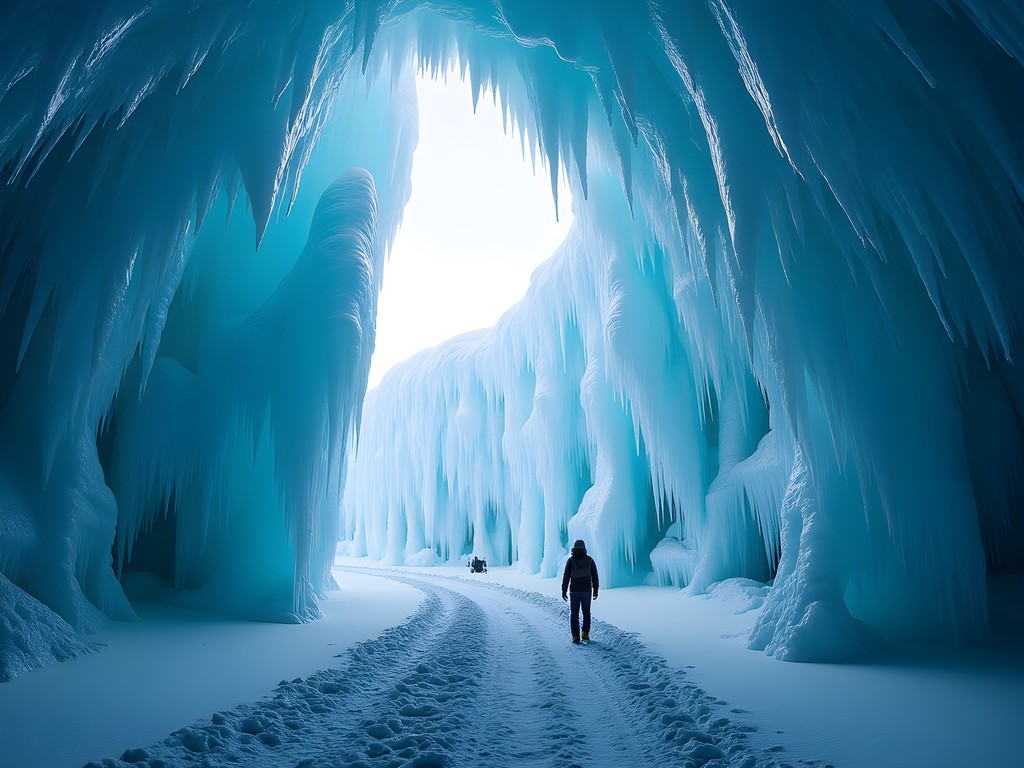
💡 Pro Tips
- Keep spare batteries inside your clothing close to body heat
- Bring silica gel packets to combat condensation when moving between temperature extremes
- Pack hand and toe warmers in abundance—they can also be used to warm camera gear in emergencies
Capturing Baikal's Famous Ice Phenomena
Lake Baikal's winter transformation produces photographic subjects unlike anywhere else on Earth. The methane bubbles trapped in clear ice—my personal obsession—create otherworldly compositions that appear almost extraterrestrial. These frozen time capsules require specific techniques to capture effectively.
For bubble photography, timing is everything. Late January through early March offers the perfect balance—thick enough ice for safety (always verify with locals) yet still maintaining remarkable clarity. I've found dawn provides the most magical light, when the low sun angle illuminates the bubbles from the side, revealing their three-dimensional structure beneath your feet.
Technically speaking, a wide aperture (f/2.8 or wider) creates beautiful separation between bubble layers. However, for maximum sharpness across multiple planes, I often stack multiple exposures at f/8 or f/11. A polarizing filter is absolutely essential—it cuts through surface reflections to reveal the depths below. My polarizing filter has been worth every penny for these shots alone.
Beyond bubbles, Baikal offers 'ice hummocks'—turquoise shards thrust skyward along pressure ridges where ice sheets collide. These dramatic formations demand different treatment: wider focal lengths (16-24mm) to capture their scale, and careful exposure bracketing to handle the extreme dynamic range between shadowed ice caves and brilliant snow.
Perhaps most magical are the ice grottoes that form along the shoreline. These require a local guide who knows precisely where to find them and—crucially—can assess their safety. Inside these crystal cathedrals, long exposures (often 15+ seconds) with your camera firmly mounted on a carbon fiber tripod will reveal colors your eyes cannot perceive—deep blues and aquamarines that seem to glow from within the ice itself.
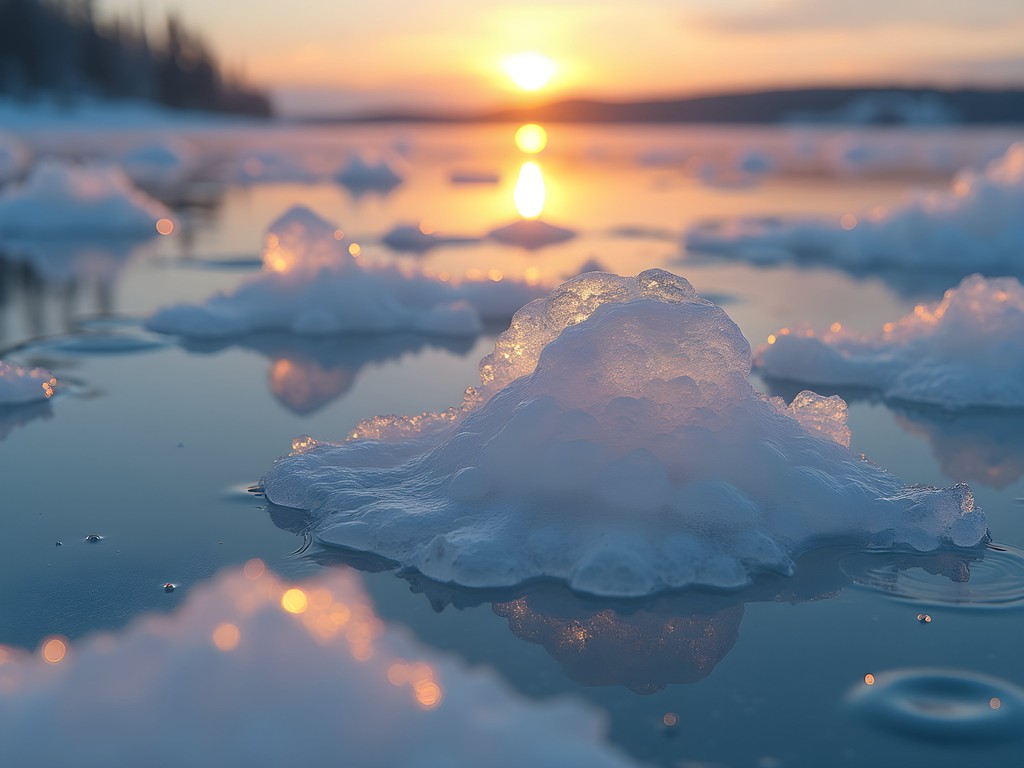
💡 Pro Tips
- Use a headlamp with red light mode to preserve your night vision when shooting in ice caves
- Bring crampons or ice spikes for your boots—stable footing is essential for sharp images
- When photographing methane bubbles, try shooting straight down with a macro lens for abstract compositions
Wildlife Photography in Siberia's Winter
While Lake Baikal might seem dormant under its winter blanket, it hosts remarkable wildlife opportunities for photographers willing to seek them out. As both a filmmaker and ornithologist at heart, tracking Baikal's winter residents has become something of a passion during my visits.
The Baikal seal (nerpa)—the world's only freshwater seal species—can be photographed at breathing holes or hauled out on ice. These encounters require patience, a telephoto lens of at least 400mm, and ethical fieldcraft. I've spent days waiting at known locations near Ushkany Islands, often rewarded with just minutes of photography. But those minutes yield images few photographers ever capture.
For bird photography, the lake doesn't disappoint even in winter. The steam rising from sections of unfrozen water attracts species like the Steller's sea eagle—one of the world's largest eagles—and the endemic Baikal teal. My telephoto zoom lens has proven its worth countless times in these situations, offering the reach needed without the bulk of prime super-telephotos.
Tracking wildlife in these conditions demands specialized equipment beyond camera gear. A quality spotting scope lets you scan distant ice for movement, while hand warmers tucked into gloves maintain dexterity for those fleeting moments when animals appear. I've learned to keep my camera rain cover handy not just for snow protection but also because lying prone on ice for hours inevitably means melting water beneath you.
Most magical of all are the encounters with Baikal's human residents who have adapted to this environment over centuries. The indigenous Buryat people maintain ice fishing traditions that make for compelling environmental portraits. Approach with respect, learn a few phrases in Russian or Buryat, and always offer prints to those you photograph—cultural exchange that enriches both your portfolio and experience.
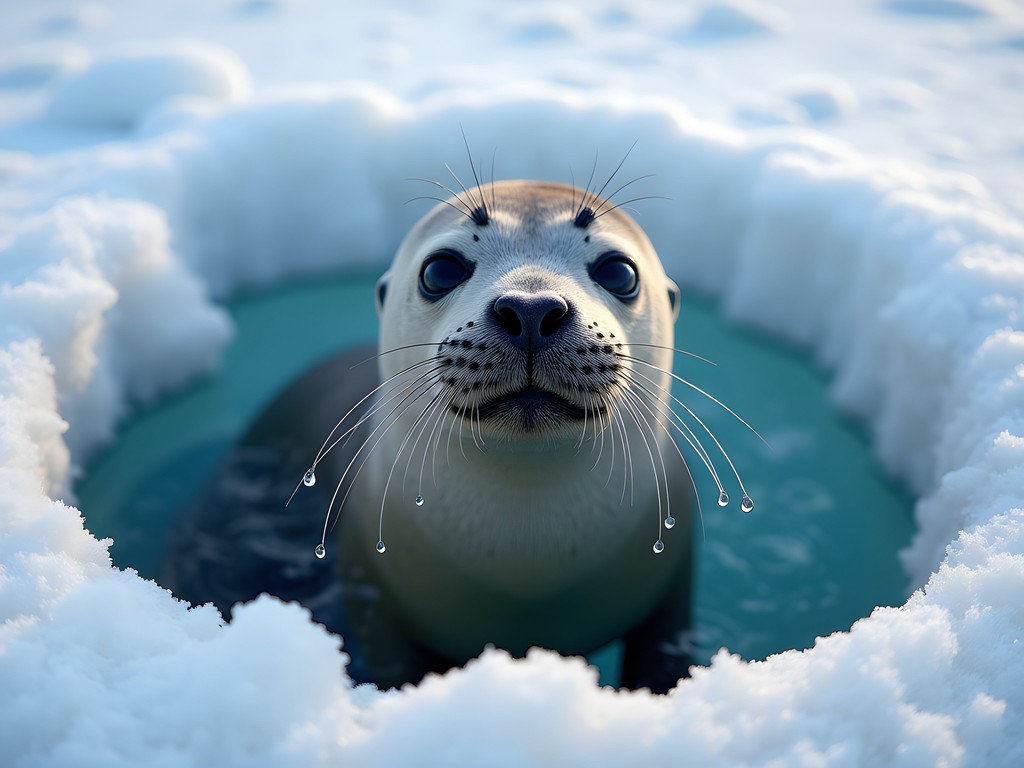
💡 Pro Tips
- Use a beanbag rather than tripod when photographing from ice—it's more stable and won't conduct cold
- Set up near known ice fishing locations for opportunities to photograph both wildlife and cultural practices
- Pre-focus on breathing holes when waiting for nerpa seals—you'll have only seconds to capture them when they surface
Night Photography: Stars, Auroras and Ice
Lake Baikal's remote location and minimal light pollution create ideal conditions for astrophotography that still haunt my dreams. The lake's vast frozen expanse offers unobstructed horizons and foreground elements that transform conventional night sky images into otherworldly scenes.
During my second winter expedition to Baikal, I witnessed the convergence of three photographic elements that still ranks as my most treasured shooting experience: the Milky Way arcing over transparent ice with methane bubbles beneath, while the northern lights danced above. This rare combination demands preparation and specialized gear.
First, timing is critical. New moon periods between late January and early March offer the darkest skies while maintaining safe ice conditions. For aurora photography, install an aurora forecast app on your phone and enable notifications—the magnetic activity around Baikal can produce displays even when global forecasts appear quiet.
Technically, night photography here requires pushing your equipment to its limits. My star tracker has revolutionized my astrophotography, allowing exposures of 2-3 minutes without star trailing, revealing nebulosity and detail invisible in standard 20-30 second exposures. For lenses, faster is better—I rarely shoot with anything slower than f/2.8 for night work.
The extreme cold presents unique challenges for long exposures. Battery consumption increases exponentially, so I carry at least six fully-charged spares for a single night shoot. Condensation becomes your enemy when moving between temperatures, so I seal my gear in airtight bags before entering warm spaces.
Composition becomes particularly challenging in darkness. I've developed a workflow of scouting locations during daylight, marking GPS coordinates, then returning after dark. For ice foregrounds, a headlamp with red mode preserves night vision while allowing you to examine the ice beneath your feet for compelling bubble formations or cracks that create leading lines to the celestial display above.
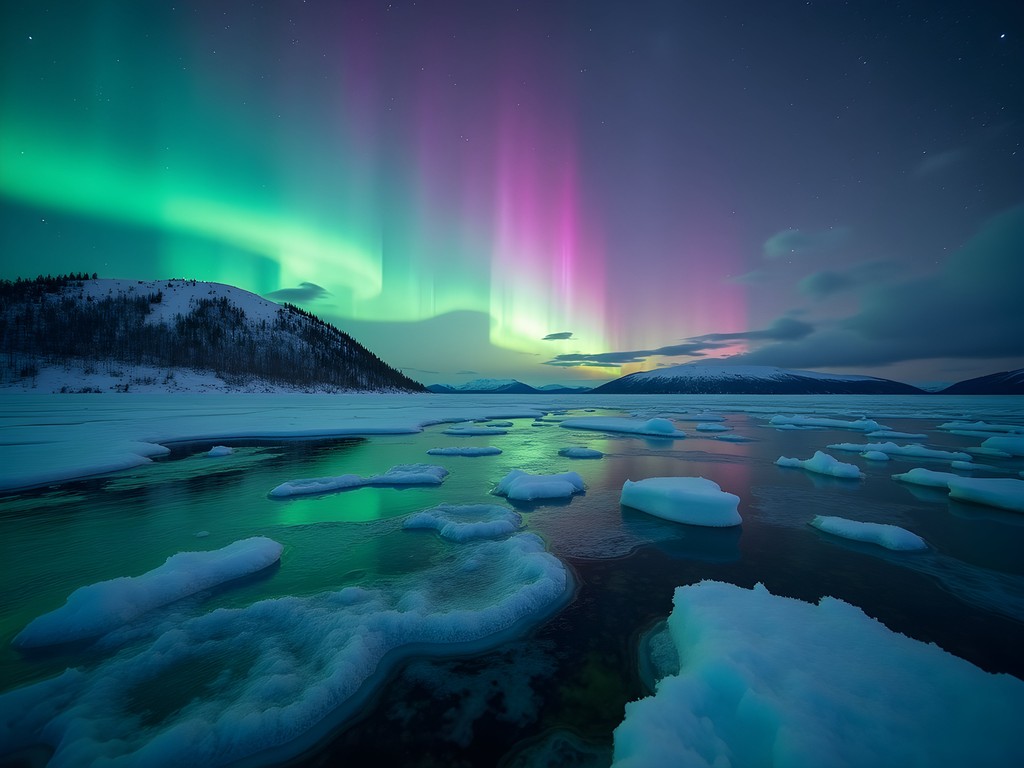
💡 Pro Tips
- Use hand warmers taped to your lens to prevent frost forming during long exposures
- Focus manually at infinity during daylight and mark the position on your lens with tape
- Shoot at ISO 6400 for quick test exposures, then drop to ISO 800-1600 for final images with the star tracker
Cultural Photography: The Buryat Connection to Baikal
Beyond its natural wonders, Lake Baikal offers rich cultural photography opportunities centered around the indigenous Buryat people, whose spiritual practices and daily life are inextricably linked to what they call the 'Sacred Sea.' As a documentary filmmaker, capturing this human element has always provided essential context to my Baikal portfolio.
The Buryat connection to Baikal spans millennia, with shamanic traditions that honor the spirits believed to inhabit the lake. Sacred sites marked by colorful prayer flags and offerings dot the shoreline, particularly on Olkhon Island. Photographing these locations requires cultural sensitivity—always ask permission before documenting ceremonies, and be prepared to put your camera away if requested.
Winter brings distinctive cultural practices to life. Ice fishing has sustained communities here for generations, and the techniques remain largely unchanged. The contrast of colorfully dressed fishermen against the minimalist white landscape creates striking visual narratives. I've found a small gift—prints from previous visits or small tokens from your home country—helps establish rapport before requesting portraits.
In villages around the lake, traditional wooden architecture with intricate blue trim stands in beautiful contrast to snow-covered surroundings. The quality of light during winter—especially during the 'blue hour' before sunrise—bathes these structures in ethereal illumination that I've found impossible to replicate elsewhere.
For cultural photography, I typically reach for my prime lens which offers the perfect balance of environmental context and intimate detail without the intimidating presence of larger zooms. Working with a translator opens doors to deeper stories and more meaningful images—I've collaborated with local university students who appreciate the opportunity to practice English while helping navigate cultural nuances.
Documenting the traditional winter dress—particularly the ornate fur-lined deels (robes) and distinctive hats—provides a fascinating glimpse into adaptation to this extreme environment. The materials, designs and decorative elements tell stories of family lineage and regional identity that add layers of meaning to your photographic narrative of Baikal.
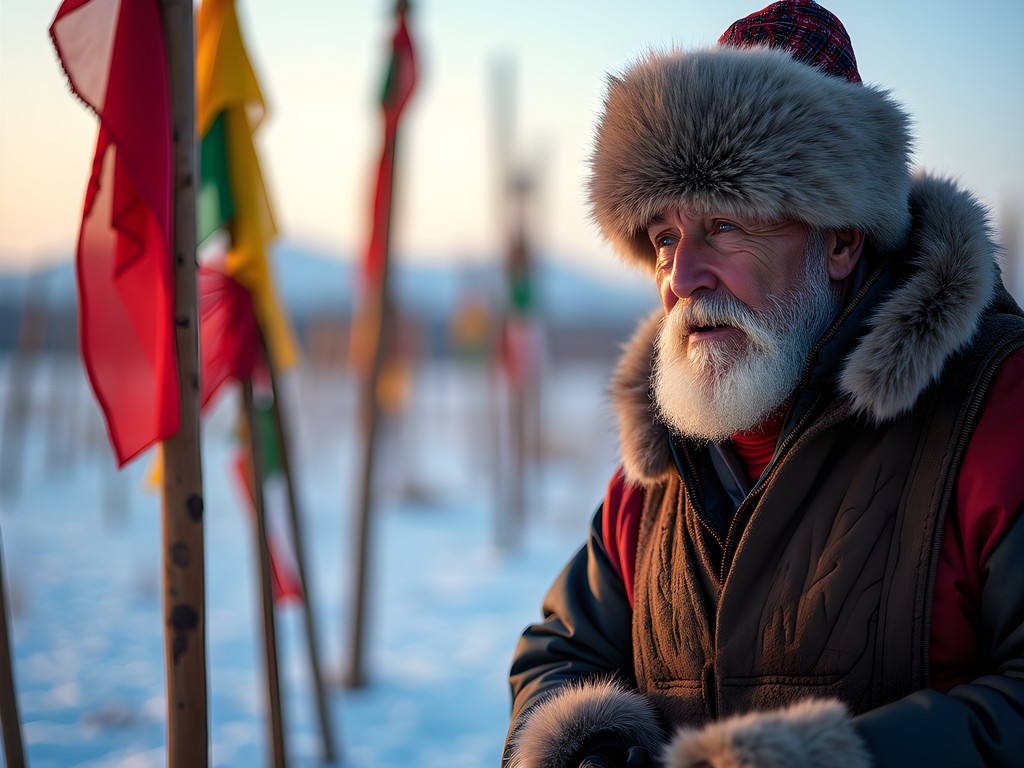
💡 Pro Tips
- Learn basic greetings in Buryat language—this simple courtesy opens many doors
- Carry a small photo printer to share images with subjects—the Polaroid-style prints make wonderful gifts
- When photographing inside traditional dwellings, use available window light rather than flash to maintain the authentic atmosphere
Final Thoughts
As I pack away my gear after each Baikal expedition, I'm left with the humbling awareness that I've only scratched the surface of this ancient sea's visual treasury. The lake changes constantly—ice formations shift overnight, light transforms familiar scenes into new compositions, and local communities continue their seasonal rhythms regardless of our cameras. This is not a destination to be rushed or treated as a photographic trophy hunt. Baikal demands patience, respect, and a willingness to embrace discomfort in pursuit of images that truly capture its spirit. Whether you're drawn to the technical challenges of astrophotography, the meditative process of ice bubble compositions, or the cultural richness of Siberia's indigenous communities, Lake Baikal will reward your persistence with images unlike any in your portfolio. Just remember—the most compelling photographs emerge when you occasionally lower your camera and simply experience the wonder of this sacred sea. The images will follow naturally, infused with the authentic connection you've formed with one of our planet's most extraordinary landscapes.
✨ Key Takeaways
- Proper cold-weather preparation for both yourself and your gear is essential for successful winter photography at Lake Baikal
- The unique ice formations and methane bubbles are best photographed in late January through early March
- Always work with local guides who understand ice conditions and can ensure your safety
- Approach cultural photography with respect, permission, and a genuine interest beyond the images
📋 Practical Information
Best Time to Visit
Late January through early March
Budget Estimate
$2,000-$3,500 USD for a week (excluding international flights)
Recommended Duration
7-10 days minimum
Difficulty Level
Challenging

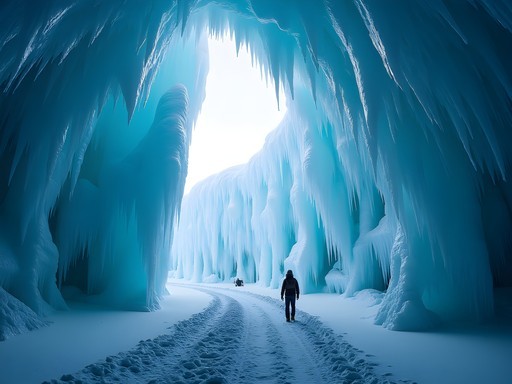








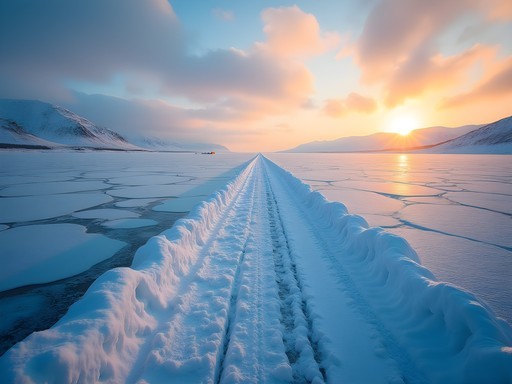

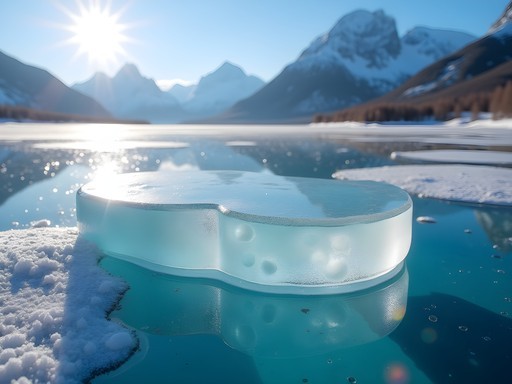



Comments
Nicole Russell
Avery, you've captured the magic of Baikal perfectly! I visited last February and was completely unprepared for how challenging (and rewarding) winter photography would be there. The temperature changes wreaked havoc on my batteries - I ended up keeping them inside my jacket next to hand warmers! Did you have any special techniques for dealing with the extreme cold? Those blue ice formations are unlike anything else on Earth. Your night photography section was especially helpful - I struggled with that aspect during my visit.
dreamzone
Nicole - how cold was it when you went? Planning a trip for next winter!
Nicole Russell
@dreamzone It was consistently -20°C (-4°F) during the day, dropping to -30°C (-22°F) at night! Layer up more than you think necessary!
luckyguy
These ice cave photos are INCREDIBLE! Definitely adding Lake Baikal to my bucket list now!
globequeen
I've been dreaming about photographing Lake Baikal for years! Avery, how difficult was it to get there from the US? Did you arrange everything yourself or go through a tour company? The visa process for Russia seems intimidating.
Avery Gordon
The visa process takes patience but isn't too bad if you start early. I went through a local tour company based in Irkutsk for the lake portions, but arranged my own flights. Happy to email you some contacts if you're serious about going!
Taylor Moreau
For those planning a Baikal photography trip, I'd strongly recommend arranging local transportation well in advance. The logistics in Siberia can be challenging, particularly in winter. I found hiring a driver with a proper 4x4 vehicle essential - the roads around the lake can become treacherous with ice. Additionally, consider bringing duplicate memory cards and a portable hard drive for backing up images daily. The unique ice formations change constantly with temperature fluctuations, so you'll want to capture as much as possible without worrying about storage limitations.
happylife
Those ice photos are absolutely stunning! I've never seen anything like those transparent blue formations. Did you need any special permits to visit the caves or can anyone just go there with a guide?
Nicole Russell
This post is EVERYTHING! Lake Baikal has been my photography holy grail since forever, and I finally made it there last winter. For anyone planning a trip, don't underestimate how challenging the shooting conditions can be! I found that setting up shots with gloves on was nearly impossible, so I invested in thin liner gloves to wear under mittens. Also, the section on capturing the night sky is spot on - I spent three freezing nights waiting for the perfect aurora shot. Worth every shivering minute! Avery, your tip about using a headlamp with a red light to preserve night vision while setting up shots was a game-changer for me. Can't wait to go back and explore more of this magical place!
tripmaster
Just got back from Baikal two weeks ago! The ice bubbles are even more incredible in person than photos show. We stayed in Khuzhir on Olkhon Island which was less touristy than I expected. Getting there was an adventure - flew to Irkutsk, then a 6-hour drive on some pretty rough roads. Worth it though! The local Buryat culture was fascinating too, something I wish I'd researched more before going. Avery, your section on respecting local customs around the lake was spot on - our guide explained how sacred many sites are.
happylife
How was the food situation there? I've heard it's pretty limited in winter!
tripmaster
Honestly better than expected! Lots of fish soups, dumplings (pozi), and omul fish dishes. Bring snacks though - restaurant options are limited outside Irkutsk.
stargal
Has anyone tried photographing the auroras there? Is it common to see them over Lake Baikal?
Taylor Moreau
I was there on business last February and extended my stay to photograph the lake. Saw faint auroras on two nights - not as dramatic as Alaska or Iceland, but the ice reflections made for unique compositions. You need to time it right and check aurora forecasts, but it's definitely possible!
George Hayes
Took my family to Lake Baikal last winter and it was an experience we'll never forget! My kids (10 and 12) were absolutely mesmerized by those blue ice formations. One tip for anyone traveling with children - the local guides in Listvyanka were incredibly accommodating and made special arrangements for shorter excursions when the kids got too cold. The hot chocolate stops were a hit! The Nerpa seals were definitely the highlight for the kids though. Avery, your night photography section inspired me to try some star shots, but I clearly need more practice! Did you find any particular spots that were more sheltered from the wind for tripod stability?
winterchamp
How cold does it actually get there? I'm interested but worried about my camera gear freezing up!
Avery Gordon
It can drop to -30°C (-22°F) or lower! I keep spare batteries inside my jacket close to my body and use hand warmers in my camera bag. The camera gloves were a lifesaver for me - thin enough for controls but warm enough to function!
winterchamp
Wow, that's intense! Thanks for the tips - definitely need to prep better than I thought.
Venture X
Premium card with 2X miles, $300 travel credit, Priority Pass